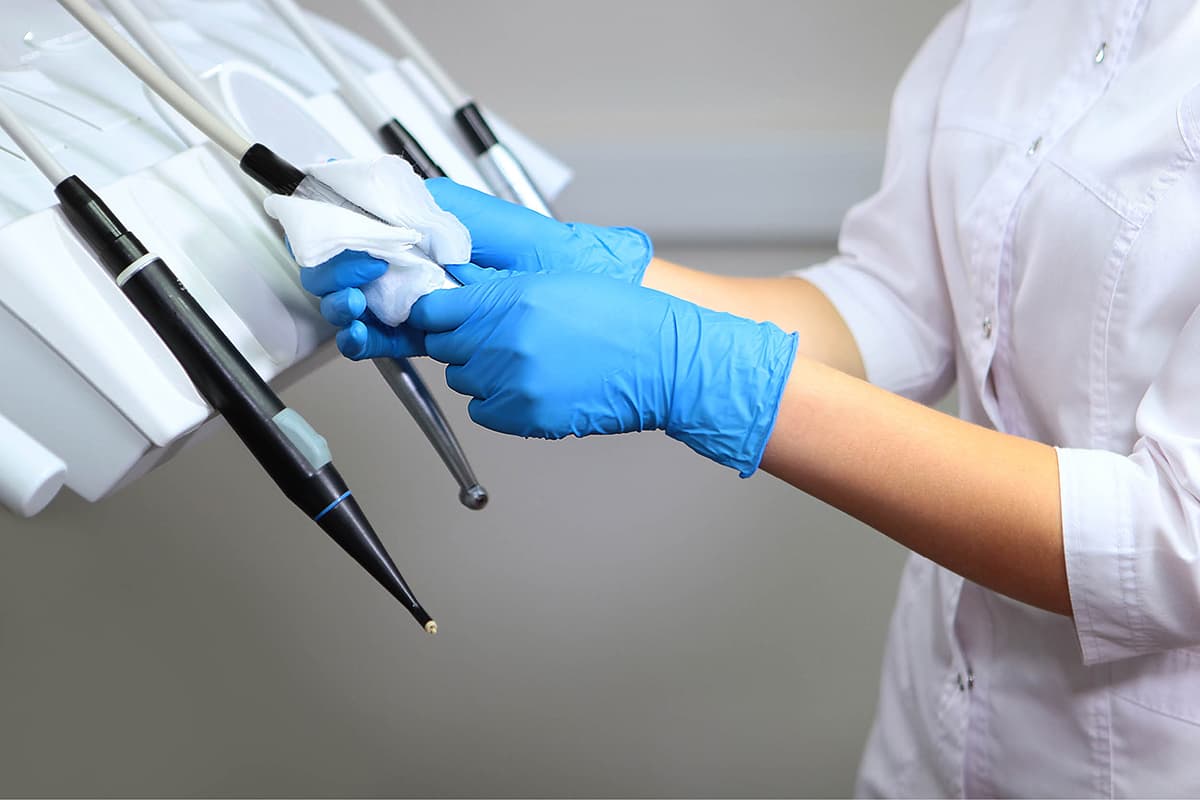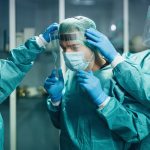2
Aug
The risks associated with jobs in the dental sector and the importance of proper prevention

A well-known chart in a New York Times[1] article published during the SARS-CoV-2 pandemic provided a graphical presentation of the risk levels of various professions in the United States.
The risk of contracting SARS-CoV-2
Each profession was represented by a bubble whose position indicated the risk of contracting SARS-CoV-2.
Two positions evaluated the frequency with which workers were exposed to disease and infection (y axis) and the total contact time during work hours (y axis).
In this chart [1] dental hygienists occupy first place, with a disease exposure and physical vicinity score of 100[1].
Immediately behind them come oral and maxillofacial surgeons, with a total risk score of 99[1], followed by dental nurses and dentists, with a total risk score of between 95 and 99[1].
Want to find out more?
Read the focus article on SARS-CoV-2 and the dental professions
The 6 main risk factors
Another article[2], using data from the Occupational Information Network, a United States Department of Labor database[3] containing a wealth of detailed information on different occupations, classified the highest risk professions in America.
All occupations were analysed in terms of their impact on workers’ health, using six major health risks:
- exposure to contaminants;
- exposure to disease and infections;
- exposure to hazardous conditions;
- exposure to radiation;
- risk of minor burns, cuts, bites and stings;
- time spent sitting (frequent inactivity reduces life expectancy[2]).
O*NET(3) rated these factors on a 0:100 scale, in which a high score indicates a greater health risk.
Dental professionals top the risk ranking
Of the 37 positions available, medical and dental professions are found within the top ten: prosthodontists occupy seventh place, dental assistants fifth place, dental technicians fourth place, generic dentists second place and in first place we find dental hygienists[2].
Prosthodontists
Seventh place is occupied by prosthodontists, dentistry graduates whose job is to replace missing teeth with prosthetic devices, and restore masticatory, respiratory, phonatory, muscular and aesthetic function.
Their overall health risk score is 63, with an exposure to disease and infections score of 88, an exposure to contaminants score of 74 and a time spent sitting score of 66[2].
Dental assistants
In fifth place we find dental assistants, whose job is to assist dentists during treatment, by disinfecting and sterilising the surgical field and preparing patients for operating procedures.
Their health risk score is 65.5, with an exposure to disease and infections score of 96, an exposure to radiation score of 85 and an exposure to contaminants score of 78[2].
Dental technicians
Fourth place is occupied by dental technicians, who are responsible for building or repairing prosthetic devices and orthodontic appliances.
Their overall health risk score is 65.7, with an exposure to contaminants score of 99, an exposure to disease and infections score of 72 and a time spent sitting score of 85[2].
Dentists
In second place we find dentists, who are tasked with examining, diagnosing and treating disorders of the oral cavity.
They have an overall risk score of 69.6, an exposure to disease and infections score of 95, an exposure to radiation score of 85 and a time spent sitting score of 82[2].
Dental hygienists
First place is occupied by dental hygienists, who prevent or stop acute and chronic oral inflammations using nonsurgical methods, and are also responsible for procedures to prevent oral cavity conditions.
Their overall health risk score is 72.8, with an exposure to disease and infections score of 100, an exposure to radiation score of 91 and an overall time spent sitting score of 85[2].
The importance of proper prevention
What we have just described shows that certain professions are at greater risk than others due to the presence of unfavourable factors associated with the work environment.
Dental hygienists, like other dentistry professionals, obtained very high scores for exposure to pathogens and radiation and sedentary lifestyle.
In short, it can be said that compliance with and knowledge of the proper protocols concerning prevention procedures can drastically reduce occupational risks and correct any habits that are potentially harmful for health.
References
[1] https://www.nytimes.com/interactive/2020/03/15/business/economy/coronavirus-worker-risk.html
Do you want more information on Zhermack Dental products and solutions?
Contact us




 Zhermack SpA has been one of the most important producers and international distributors of alginates, gypsums and silicone compounds for the dental sector for over 40 years. It has also developed solutions for the industrial and wellbeing sectors.
Zhermack SpA - Via Bovazecchino, 100 - 45021 Badia Polesine (RO), Italy.
Zhermack SpA has been one of the most important producers and international distributors of alginates, gypsums and silicone compounds for the dental sector for over 40 years. It has also developed solutions for the industrial and wellbeing sectors.
Zhermack SpA - Via Bovazecchino, 100 - 45021 Badia Polesine (RO), Italy.


